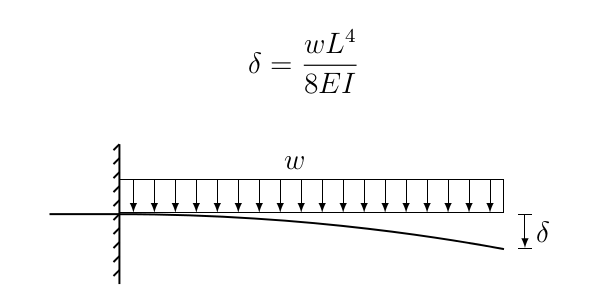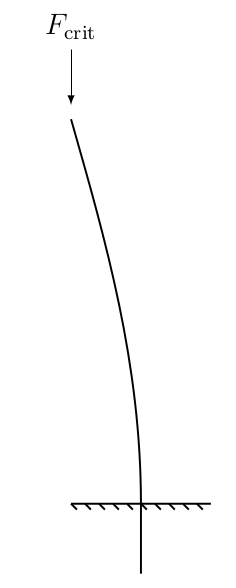Our last post outlined the ideas behind The Grid, an art/engineering installation at Electromagnetic Field (EMF) 2014. In this post, we'll get into the details of the design, starting with the structure.
Materials
The basic requirement of our structural design was to hold 49 2.5m lengths of LED strip rigidly and vertically in a 12m x 12m grid. I've written this as loosely as possible – the use of poles is a design decision, not a requirement! We did consider hanging the LED strips freely from an overhead structure such as scaffold, however the required structure would be very large, expensive, and heavy. An intuitive design to fit these requirements, and the design we chose, is the use of 49 rigid poles pushed into soft ground. This avoids all the cost and complexity of more complicated mounting or larger structures.
The structural design took us unawares by being rather more difficult than either of us initially predicted. There are no shortage of easy ways to construct a rigid, vertical, 2.5m pole, however, most of these become impractical when constructing 49 poles on a student budget!
We quickly decided poles would simply be pushed into soft ground rather than any more sophisticated mounting. This meant we'd need poles approximately 3m long, with 2.5m protruding. To achieve a reasonable stiffness (more on this later), we'd need poles with a cross section on the order of a couple of centimetres. Based on this specification of “49 poles, 3m long, cross section ~3cm” and aiming for a cost of around £4 per pole immediately rules out most commercial options (for instance fishing poles or scaffolding). Even assuming we would prepare the poles from bulk material, price ruled out the use of composite materials (such as fibreglass or carbon fibre), plastics, or wood. The only options left were metals, namely steel or aluminium. Even these materials looked impractically expensive until we found a good wholesaler. Finally, steel was ruled out by being prohibitively heavy (well over 100kg) to transport to site in my very modest-sized car, as well as being harder to cut and drill. This left us with aluminium.
Linear Elastic Beam Theory
Using a number of assumptions, linear elastic beam theory gives us a remarkably elegant way of analysing certain structures. Furthermore, the assumptions are often well satisfied, meaning it can make rather accurate predictions. Firstly, we assume the material involved is perfectly elastic – it works like a spring and will always return to its original position when forces are removed. We also assume the materials are linear elastic – they deform by an amount directly proportional to the force applied.
We consider only slender beams, which means any deformation due to tension or compression along their axis will be negligible compared to bending forces and displacements. Finally, we assume deformations are small – in addition to permanently distorting the materials, large displacements introduce significant curvature into the beams and make the maths an awful lot more difficult!
Under these assumptions, linear elastic beams are governed by relatively simple differential equations. Solving these differential equations for different boundary conditions gives solutions corresponding to different physical setups and loadings of the beams.
Uniformly Loaded Cantilever
Here is one standard solution of the differential equations, the uniformly loaded cantilever. A cantilever is an idealised beam which is fixed at one end (that end can neither move nor rotate) and otherwise totally free, a good description of a pole embedded in the ground at one end. The uniform loading is a force spread out evenly over the whole length of the beam, which can be used to approximate wind loading. Here's a diagram, and how much the beam deflects under uniform loading:
Euler Buckling
An important test of our structural design is whether the poles will stand up under their own weight! A slender (significantly longer than it is wide) beam, when subjected to compressive forces along its axis, will tend to fail by buckling. Euler buckling theory notes that buckled structures take on a sinusoidal shape. We can work out how much energy is needed to bend a beam into a particular sinusoidal deformation and, using conservation of energy, equate this with the energy expended by the force causing our beam to buckle! This trick lets us estimate the buckling force of a beam which is free to rotate at each end:
Our poles are, however, not free to rotate at each end – the end embedded into the ground will always remain straight. A handy observation is that the centre of the beam above always remains horizontal regardless of how much the beam buckles. Therefore, the buckling of a beam fixed at one end is identical to one half of a freely-mounted beam buckling. Equivalently, to find the buckling force of a fixed beam with an axial compressive force applied at one end, we just use the formula above but double the length of our pole!
Specifications
Both the horizontal cantilever formula and the formula for buckling depend on the stiffness of the beam, EI. This parameter depends on the material stiffness (or Young Modulus) E, and the “second moment of area”, I, which depends on the beam cross section. We can now determine whether a particular cross section beam will stand up to our specifications!
Having settled on aluminium poles and determined the stiffness we require, we needed to decide between the vast array of specifications on offer. Engineering and construction metals come in a dizzying variety of cross sections, each intended for different uses and with different strengths and weaknesses. The optimum cross section for our use (maximum stiffness in all directions with minimum material) would be a thin-walled tube, however due to the relative complexity of manufacturing tubes this is one of the more expensive options. Equal angle section (two flat pieces of equal width and thickness in a right-angle) was considerably cheaper due to its ease of manufacture and regularity of use and would work nicely for our purpose.
Our final design was poles constructed from 3m lengths of aluminium equal-angle section, each side being 3/4” wide and 1/16” thick. These poles can easily support their own weight (and the weight of LED strip!) when vertical, and give little deflection under wind loading up to severe gales. After an order with a metal stockist and a few days of waiting, we had our metal:





Top Comments
-

mcb1
-
Cancel
-
Vote Up
0
Vote Down
-
-
Sign in to reply
-
More
-
Cancel
-

thegrid
in reply to mcb1
-
Cancel
-
Vote Up
+1
Vote Down
-
-
Sign in to reply
-
More
-
Cancel
-

mcb1
in reply to thegrid
-
Cancel
-
Vote Up
0
Vote Down
-
-
Sign in to reply
-
More
-
Cancel
Comment-

mcb1
in reply to thegrid
-
Cancel
-
Vote Up
0
Vote Down
-
-
Sign in to reply
-
More
-
Cancel
Children